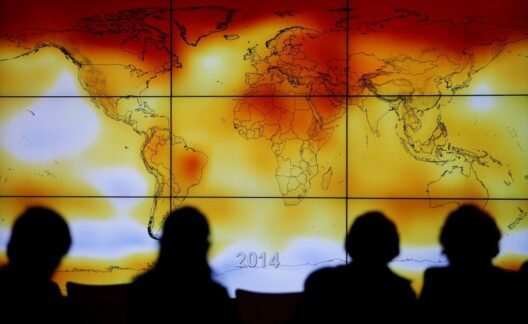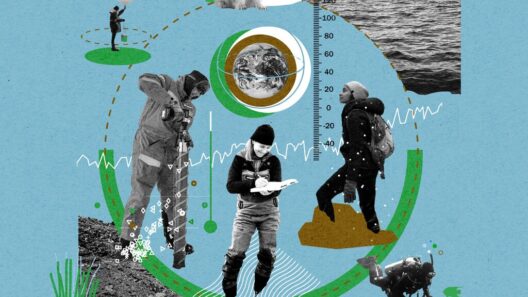Global warming, a pressing issue enshrined in the urgent conversations of our time, presents an alarming narrative of the planet’s escalating temperature due to greenhouse gas emissions. As we stand at the precipice of climatic changes, it becomes imperative to embark on scientifically validated pathways to ameliorate this crisis. This discourse delineates several actionable strategies anchored in empirical research, each possessing the potential to substantially mitigate the deleterious effects of global warming.
One of the primary culprits of climate change is the incessant reliance on fossil fuels. Transitioning to renewable energy sources is paramount. Solar, wind, geothermal, and hydroelectric power harness the Earth’s innate energy and have been proven to drastically reduce carbon emissions. Solar panels, for example, can convert sunlight into energy, facilitating a cleaner alternative for electricity generation. According to the International Energy Agency, the proliferation of renewables could lead to a decrease in global CO2 emissions by up to 70% by 2050. Such a monumental shift necessitates investment, policy reform, and the infrastructural evolution of energy systems worldwide.
Furthermore, cultivating energy efficiency in homes, industries, and transportation can dramatically curtail energy use and emissions. Implementing smart thermostats, advanced insulation techniques, and energy-efficient appliances can reduce energy consumption by as much as 30%. Companies that adopt energy-efficient practices not only diminish their carbon footprint but can also experience significant financial savings, creating a dual benefit that underscores the necessity of such measures.
Altering our mode of transportation significantly contributes to lessening our environmental impact. The transportation sector, which heavily relies on fossil fuels, represents a substantial portion of global emissions. Embracing electric vehicles (EVs) is a cornerstone in this transformation. EVs produce zero emissions at the tailpipe, and with technological advancements and government incentives, their adoption is on the rise. Public transportation systems also warrant an overhaul; expanding and modernizing these networks could encourage fewer individuals to rely on personal vehicles, thereby reducing overall emissions.
A complementary strategy lies in the realm of urban planning. Sustainable cities must encapsulate green spaces, efficient public transport, and pedestrian-friendly zones, promoting lower emissions. The concept of “15-minute cities,” where all essential services are within short walking or cycling distance, not only enhances community cohesion but significantly lowers reliance on motorized transport. Cities like Paris and Melbourne are at the forefront of this innovative urban planning approach, showcasing the immense potential for environmental and social benefits.
The intricate relationship between agriculture and climate change cannot be overlooked. Modern agricultural practices, while efficient in increasing yields, often contribute to high levels of methane and nitrous oxide emissions. Adopting regenerative agricultural practices, such as crop rotation, cover cropping, and agroforestry, can restore ecosystems and sequester carbon in soils. It is estimated that soil carbon sequestration could offset a significant percentage of global CO2 emissions and enhance soil health, rendering it mutually beneficial for both the environment and farmers.
Moreover, the global food system demands a reevaluation. The reduction of food waste is an underappreciated yet potent method to combat global warming. Approximately one-third of food produced for human consumption is wasted, generating unnecessary emissions in its production and disposal. By improving supply chains, enhancing consumer education, and implementing proper food storage techniques, we can substantially limit waste, thereby decreasing associated emissions.
Carbon capture and storage (CCS) has emerged as a viable technological solution to counteract emissions from industries traditionally seen as hard-to-abate, such as cement and steel. CCS involves capturing CO2 emissions at the source and storing it underground, thus preventing it from entering the atmosphere. While still in developmental stages, successful implementation of this technology could facilitate a significant reduction in industrial emissions, rendering it an essential component of a comprehensive climate strategy.
Investing in reforestation and afforestation presents another crucial avenue. Forests are vital carbon sinks, absorbing CO2 from the atmosphere. Global initiatives to plant billions of trees could sequester vast amounts of carbon while enhancing biodiversity and protecting ecosystems. Notably, maintaining existing forests through sustainable management practices is equally essential to prevent carbon release from deforestation.
Additionally, public engagement and advocacy play an instrumental role. The phenomenon of climate change necessitates a collective response. Grassroots movements, educational programs, and community initiatives can amplify awareness and promote sustainable practices among individuals and organizations. Skilled storytellers and communicators can mobilize public support for climate policies, driving systemic change through collective action.
In perpetuating the discourse on solutions for global warming, we must embrace a multifaceted approach. Each proposed measure, whether technological, agricultural, or societal, carries the weight of scientific validation, fostering a sense of accountability and urging individuals and governments to adhere to these frameworks. The path to staving off the crippling impacts of climate change is fraught with challenges, yet the promise of a sustainable future stirs hope. If we dare to alter our trajectory, we can empower ourselves to slow down and ultimately fix global warming, safeguarding our planet for generations to come.






